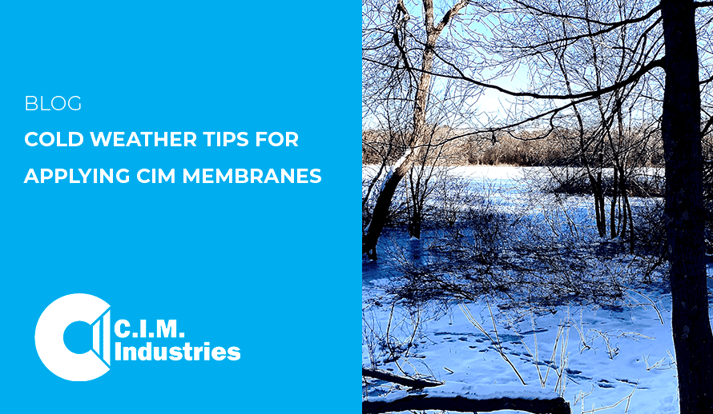
Cold temperatures can impact the curing of coatings. Applications at colder temperatures, or below the manufacturer’s recommendations, require experienced contractors familiar with CIM waterproofing products. To achieve the best results, it is important to pay attention to the manufacturer’s application procedures.
Smart tips for cold weather applications:
- On cold, rainy and windy days, monitor the temperatures, dew point, and wind-chill.
- These elements can account for moisture in the air as well as moisture formation on the substrate.
- CIM waterproofing coatings should be applied only when the substrate temperature is at least 5°F above the dew point temperature.
- Continually monitor air and surface temperatures, dew point, and humidity levels.
- If the surface temperature readings continue to encroach upon the 5°F differential, stop the coating application, and contact your local CIM representative for instructions.
- The substrate must be dry.
- Condensation can occur faster at lower temperatures, particularly as surface temperatures approach the dew point.
- Check for frost and avoid applying coatings if frost is found on the substrate.
- The viscosity of CIM will increase as the temperature decreases. Increased viscosity results in a material that can be difficult to apply. Applications at lower temperatures should be carried out as if the working time was considerably shorter than it is at 60°F.
- The Premix and Activator should be preheated, typically 1°F above 60°F for every degree that the substrate will be below 50°F. As product temperatures are increased, working times will be shortened.
- Heated or insulated lines may be required to maintain temperatures when spraying CIM products.
- Material cure times and solvent loss rates are much slower at lower temperatures. CIM products typically cure within several hours at 70°F but may take up to a week, possibly longer, to cure at 20°F.
- The minimum time differential required between coats increases with lower temperatures.
- Slower cure times will limit the amount of CIM material that can be applied to a vertical surface because CIM products will continue to flow for an extended period.
- Vertical surfaces can be coated with no more than 15 to 20 mils per coat, or significant sags and runs may occur. Total thickness should be 60 mils or more based on the specifications.
- Vertical surfaces may require at least three coats to achieve the recommended thickness.
- CIM’s Epoxy Moisture Tolerant Primer can be applied in temperatures as low as 40°F; otherwise, utilization of an epoxy primer may need to be excluded in lower temperatures.
- DOCUMENT environmental conditions.
- When in doubt, the best solution is to delay the start of the project until temperatures get warmer.
CIM's Cold Weather Application Guidelines and Product Checklists are available for utilization throughout the coating application process.
CIM's two-part urethane fluid-applied liners and coatings have been keeping liquids where they belong for over 35 years.
Our team of technical consultants is available to assist you with product information to meet your coating needs.
Related Articles:
Don't Let Environmental Conditions Ruin Your Next Coating Project
Smart Tips for Cold Weather Coating Application That Will Save you Time






